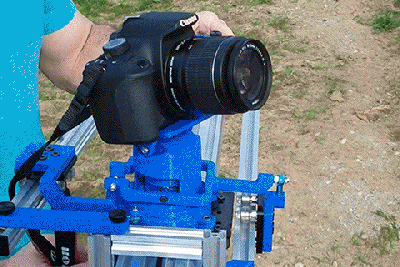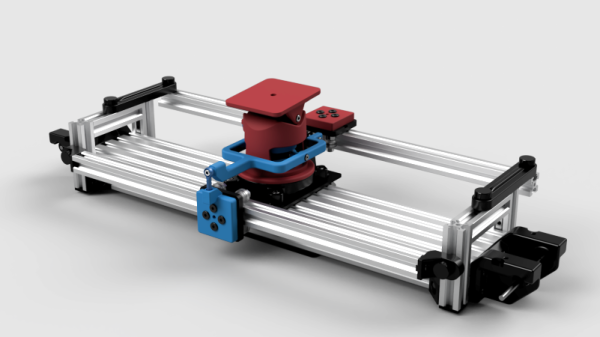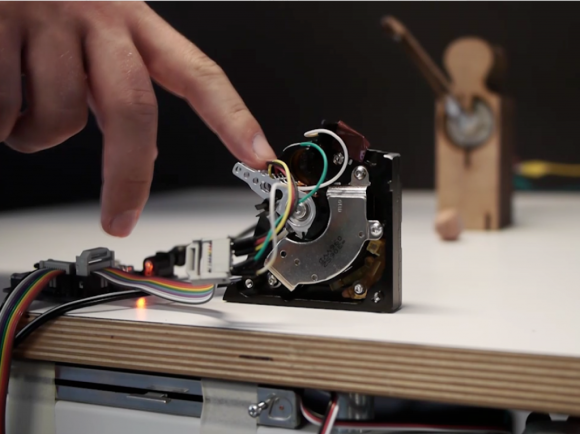A camera slider is a popular and simple project — just a linear slide, a stepper, and some sort of controller. Adding tilt and pan axes ups the complexity until you’ve got three motors, a controller, and probably a pretty beefy battery pack to run everything. Why not simplify with an entirely mechanical pan-tilt camera slider and leave all that heavy stuff at home?
 There’s more than one way to program motion control, and [Enza3D]’s design uses adjustable rails to move the gimballed pan-tilt head through two axes of motion. One rail adjusts vertically to control tilt, while the other adjusts in and out relative to the slider to control pan. Arms ride on each rail and connect to the gimbals to swivel the camera in both dimensions while it travels down the manually cranked slide. It’s pretty clever and results in some clean, dynamic shots as in the video below.
There’s more than one way to program motion control, and [Enza3D]’s design uses adjustable rails to move the gimballed pan-tilt head through two axes of motion. One rail adjusts vertically to control tilt, while the other adjusts in and out relative to the slider to control pan. Arms ride on each rail and connect to the gimbals to swivel the camera in both dimensions while it travels down the manually cranked slide. It’s pretty clever and results in some clean, dynamic shots as in the video below.
Our quibble is that the “program” is only linear since the control rails are straight lengths of aluminum extrusion; seems to us that some sort of flexible control rails might make for more interesting shots. [Enza3D] has amply documented the build and is looking for feedback, so comment away. And if you don’t have a 3D printer to make the parts, wood works for a slider too.
Continue reading “Camera Slide Pans And Tilts Camera Mechanically”













